 The 30th International Sunbelt Social Network Conference (Sunbelt XXX) was held June 29 to July 4, 2010 in Trento, Italy. This is the official conference for the International Network for Social Network Analysis (INSNA).
The 30th International Sunbelt Social Network Conference (Sunbelt XXX) was held June 29 to July 4, 2010 in Trento, Italy. This is the official conference for the International Network for Social Network Analysis (INSNA).
Sep 1st, 2010
Read more
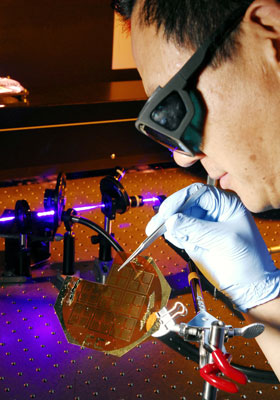 Researchers at the Georgia Institute of Technology have developed a new class of electronic logic device in which current is switched by an electric field generated by the application of mechanical strain to zinc oxide nanowires.
Researchers at the Georgia Institute of Technology have developed a new class of electronic logic device in which current is switched by an electric field generated by the application of mechanical strain to zinc oxide nanowires.
Sep 1st, 2010
Read more
A new 'smart materials' process - Multiple Memory Material Technology - developed by University of Waterloo engineering researchers promises to revolutionize the manufacture of diverse products such as medical devices, microelectromechanical systems (MEMS), printers, hard drives, automotive components, valves and actuators.
Sep 1st, 2010
Read more
Probing for principles underlying flock patterns.
Sep 1st, 2010
Read more
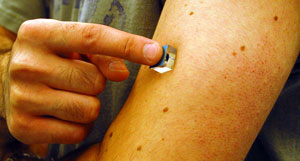 Purdue University researchers have developed a new type of pump for drug-delivery patches that might use arrays of microneedles to deliver a wider range of medications than now possible with conventional patches.
Purdue University researchers have developed a new type of pump for drug-delivery patches that might use arrays of microneedles to deliver a wider range of medications than now possible with conventional patches.
Sep 1st, 2010
Read more
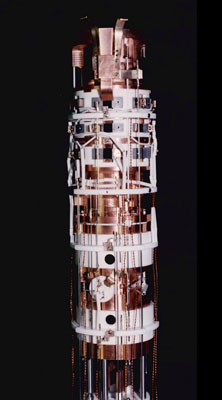 Measurements of slight forces - one yoctonewton is equivalent to the weight of a single copper atom on Earth - can be useful in force microscopy, nanoscale science, and tests of fundamental physics theories.
Measurements of slight forces - one yoctonewton is equivalent to the weight of a single copper atom on Earth - can be useful in force microscopy, nanoscale science, and tests of fundamental physics theories.
Sep 1st, 2010
Read more
 Researchers at the National Institute of Standards and Technology (NIST) have created 'quantum cats' made of photons (particles of light), boosting prospects for manipulating light in new ways to enhance precision measurements as well as computing and communications based on quantum physics.
Researchers at the National Institute of Standards and Technology (NIST) have created 'quantum cats' made of photons (particles of light), boosting prospects for manipulating light in new ways to enhance precision measurements as well as computing and communications based on quantum physics.
Sep 1st, 2010
Read more
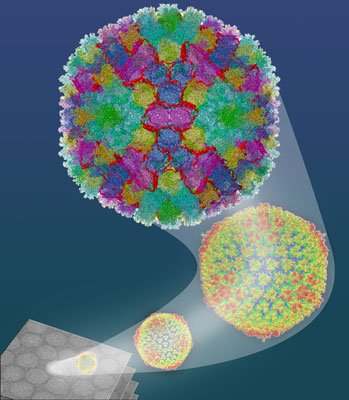 Researchers clear hurdle on path toward gene-therapy treatment for disease.
Researchers clear hurdle on path toward gene-therapy treatment for disease.
Sep 1st, 2010
Read more
Speakers made from carbon nanotube sheets that are a fraction of the width of a human hair can both generate sound and cancel out noise - properties ideal for submarine sonar to probe the ocean depths and make subs invisible to enemies.
Sep 1st, 2010
Read more
Today, at the Engineering in Medicine and Biology Conference (EMBC) in Buenos Aires (Argentina), imec and its project partners announce the launch of the European Seventh Framework Project MIRACLE. The MIRACLE project aims at developing an operational lab-on-chip for the isolation and detection of circulating and disseminated tumor cells (CTCs and DTCs) in blood. The new lab-on-chip is an essential step towards faster and cost-efficient diagnosis of cancer.
Sep 1st, 2010
Read more
Scientists speak of sputtering when energy-rich ions hit a solid object and cause atoms to be released from its surface. The phenomenon can be exploited to apply microscopically thin coatings to glass surfaces. A research team has developed a special sputtering technique that greatly increases the efficiency of the coating process.
Sep 1st, 2010
Read more
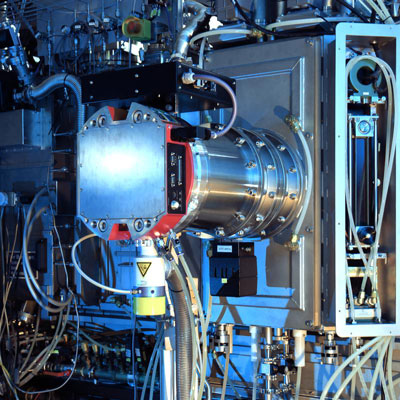 Wenn energiereiche Ionen auf einen Festkoerper treffen und aus ihm Atome loesen, nennt man das Sputtern. Damit lassen sich Glasoberflaechen hauchduenn beschichten. Forscher haben ein spezielles Sputter-Verfahren entwickelt und die Beschichtungseffizienz enorm erhoeht. Von dem Ergebnis profitiert nicht nur die Architektur.
Wenn energiereiche Ionen auf einen Festkoerper treffen und aus ihm Atome loesen, nennt man das Sputtern. Damit lassen sich Glasoberflaechen hauchduenn beschichten. Forscher haben ein spezielles Sputter-Verfahren entwickelt und die Beschichtungseffizienz enorm erhoeht. Von dem Ergebnis profitiert nicht nur die Architektur.
Sep 1st, 2010
Read more
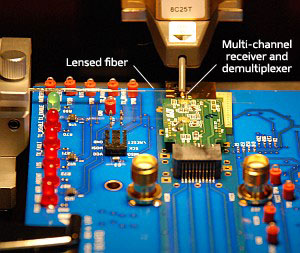 Silicon-based photonic circuits achieve data transmission capabilities sufficient for next-generation devices.
Silicon-based photonic circuits achieve data transmission capabilities sufficient for next-generation devices.
Sep 1st, 2010
Read more
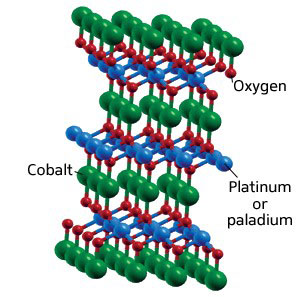 Two oxides show strong thermoelectric properties despite being metallic.
Two oxides show strong thermoelectric properties despite being metallic.
Sep 1st, 2010
Read more
 Gold nanoparticles power a quick and colorful method to detect protein-DNA interactions with nucleotide-specific sensitivity.
Gold nanoparticles power a quick and colorful method to detect protein-DNA interactions with nucleotide-specific sensitivity.
Sep 1st, 2010
Read more
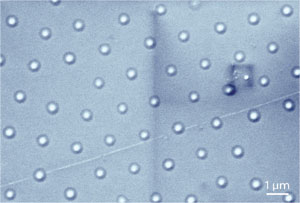 A single laser pulse is sufficient to fabricate nanostructures suitable for microelectronic devices.
A single laser pulse is sufficient to fabricate nanostructures suitable for microelectronic devices.
Sep 1st, 2010
Read more
 The 30th International Sunbelt Social Network Conference (Sunbelt XXX) was held June 29 to July 4, 2010 in Trento, Italy. This is the official conference for the International Network for Social Network Analysis (INSNA).
The 30th International Sunbelt Social Network Conference (Sunbelt XXX) was held June 29 to July 4, 2010 in Trento, Italy. This is the official conference for the International Network for Social Network Analysis (INSNA). 










 Subscribe to our Nanotechnology News feed
Subscribe to our Nanotechnology News feed